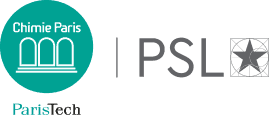Séminaire Programme Gradué Chimie PSL
Préfabriqué 1 11 rue Pierre et Marie Curie, Paris, FranceThermoluminescence, a tool to control defects in materials Bruno Viana () IRCP Chimie-Paristech, Paris, France Scientific Seminar Friday 10th of September 2:00 PM Room Prefabriqué 1 at Chimie ParisTech - PSL Thermoluminescence or thermally stimulated luminescence is a perfect tool to characterize the defects in the luminescent materials. In general, defects should…
Séminaire Programme Gradué Chimie PSL
VisioconférenceOn wrinkles, and what they have to do with liquid crystals A thin elastic sheet attached to a soft substrate often develops wrinkle patterns when subject to an external forcing or as a result of geometric incompatibility. Such patterns appear spontaneously in a variety of natural systems, ranging from plant tissues to drying paint and…
Séminaire Programme Gradué Chimie PSL
Université de Paris 45 Rue des Saints-Pères, Paris, FranceThe next CMC seminar will be held on September 17th (10.30 am) in room Génome with a presentation from Erica Benedetti (Université de Paris). The title and abstract can be found below. Presentation title: Synthesis and applications of planar chiral paracyclophanes Abstract: Originally discovered in a serendipitous fashion by vapour phase pyrolysis of p-xylene, paracyclophane (pCp) and its derivatives have rapidly gained popularity amongst…
Séminaire Programme Gradué Chimie PSL
The biophysics of plant morphogenesis Arezki Boudaoud from Ecole Polytechnique The seminar will take place in person in the Gulliver library and by zoom at the link below: What sets the size and form of organisms is still, by large, an open question. During this talk, I will aim at a broad audience…
Séminaire Programme Gradué Chimie PSL
VisioconférenceDr. Simion Beldean from Babes Bolei University (Cluj Napoca, Romania), currently present in the CBI/LSABM, will present his research work, focused on the use of GCxGC for the analysis of complex environmental samples, during a meeting that will take place on Monday 20th September, at 14h. This meeting will occur in the LSABM library (F2.09)…
Séminaire Programme Gradué Chimie PSL
VisioconférenceFrom Superfluids to Mott Insulators with Dipolar Excitons By François Dubin, INSP Paris Semiconductor excitons are composite bosons made by the Coulomb attraction between electrons and holes. Enforcing a spatial separation between these carriers provides a well oriented electric dipole to excitons, which then become model dipolar quasi-particles to explore collective quantum phenomena in the solid-state. In…
Séminaire Programme Gradué Chimie PSL
VisioconférenceControlling interactions in real space across the lengthscales: love, hate and criticality Paddy Royall Polymers, liquid crystals, surfactants, and colloidal dispersions form the four historic pillars of soft matter. For physicists, colloids were a relatively late entry into the field, driven in no small way by the seminal work of Peter Pusey and Bill…
Séminaire Programme Gradué Chimie PSL
Responsive microgels: from individual systems to their collective properties Jérôme Crassous, Institute of Physical Chemistry, RWTH Aachen University,52074 Aachen, Germany Abstract: Although poly(N-isopropylacrylamide) microgels have been widely used as model systems for soft colloids, their properties are still far to be completely understood. This stems from their heterogeneous structure strongly differing from an idealized…
Séminaire Programme Gradué Chimie PSL
VisioconférenceInstabilities and geometry of growing tissues Doron Grossman, Collège de France The vertex model is a discrete often used to described cellular media, where elastic energy depends on the difference of cells' actual area and perimeter from a reference values. Cells are allowed to change neighbors via di fferent topological transition - including division,…
Séminaire Programme Gradué Chimie PSL
VisioconférenceInstabilities and geometry of growing tissues Doron Grossman (Collège de France) Abstract: The vertex model is a discrete often used to described cellular media, where elastic energy depends on the difference of cells' actual area and perimeter from a reference values. Cells are allowed to change neighbors via di fferent topological transition -…

